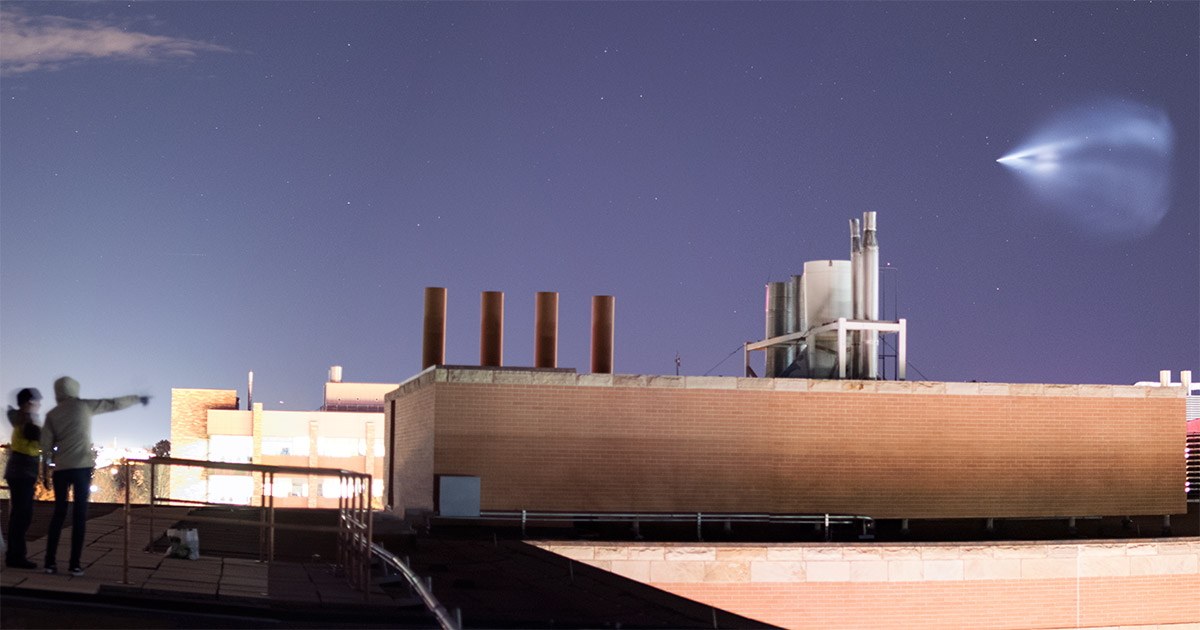
Colorado State Astronomy Club students accidentally witnessed the third burn of the SpaceX Falcon Heavy rocket the evening of Feb. 6. Photo credit: Norman Revere
Completely by accident, Colorado State University amateur astronomers caught a glimpse of history in the Feb. 6 evening sky.
About 30 seconds into their second meeting of the semester, around 8:30 p.m., the Colorado State Astronomy Club got a clear-as-day view of the SpaceX Falcon Heavy rocket, launched to worldwide fanfare Feb. 6. They were gathered, as usual, on the roof of the Natural and Environmental Sciences Building for observation. Minutes earlier, they’d been chatting about the rocket. No one expected to see it.
As they were setting up telescopes, the students, including third-year biomedical and mechanical engineering major Bella Demiranda, noticed a hazy, bright white light. She thought it was a plane behind clouds. Josefina Belay, a second-year engineering science major, said there was speculation that the light was coming from a satellite.
“All of a sudden, a tail started to fan out behind the object,” Demiranda said. “It was stunning.” It was only later that the students realized what they’d seen.
Fortunately, club president and third-year ecosystem science and sustainability student Norman Revere – also an astrophotographer – happened to have his camera.
“It was when I took the picture and it popped up on my camera’s screen that I realized just how big this thing was,” Revere said. “I’ve never seen anything like it in my life, and this is coming from a guy who’s seen rocket launches and a total solar eclipse. I think the fact that it was a manmade phenomenon really made it incredible to see.”
The students almost certainly witnessed the rocket’s third and final burn, which boosted it toward Mars.
The rocket launched from Cape Canaveral, Florida, at about 1:45 p.m. Mountain Standard Time.
Learn more about the Colorado State Astronomy Club and how to join.

A panoramic view of the SpaceX rocket as it passed over the horizon in Fort Collins. Photo credit: Norman Revere